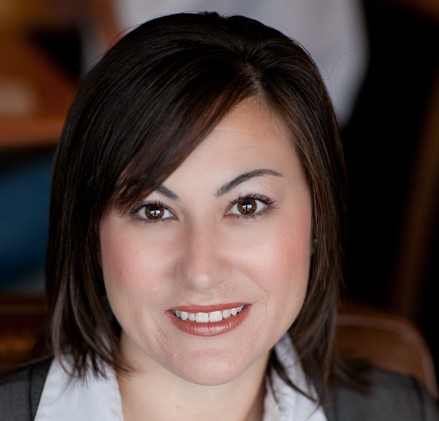Our SBSA founder, Lynn Williams, was approached by Globe and Mail a few weeks ago for her consultation on a portfolio makeover. Here is the full Globe and Mail article that featured Lynn:
After losing her husband, Jim, to cancer a few years ago, Eileen finds herself facing some difficult decisions, as well as many mixed emotions. The two were happily married for more than three decades, but the end came quickly: Once Jim was diagnosed, he lived just another three months.
Eileen, 58, describes Jim as having been gregarious, generous and unafraid of risk. He made some smart money moves, including leaving her with a life-insurance policy worth more than $1-million. But he dabbled in several business ventures, one of which has since gone into receivership.
Meanwhile, Eileen, who has grown children, is feeling overwhelmed. Should she sell the family home that Jim helped to build or the couple’s beloved vacation property? How can she help her kids with university and housing costs while ensuring a stable financial future for herself? What will she be able to leave her children?
To say Jim’s estate is complicated is an understatement, she notes, which only exacerbates her financial concerns.
“I’m nervous about money and probably have an unhealthy psychology around it; I always worry about it,” Eileen admits. “I also don’t feel confident about my mutual fund investments. I already have capital losses of close to $30,000 and really feel that I haven’t invested my life insurance wisely. I worry that I won’t have enough to fully retire on and that there may not be an inheritance for our children. Had Jim lived, he would have been able to continue to provide a financial safety net that we all very much felt he gave to our family as a whole.”
The toughest question is what she should do about the couple’s real estate.
“I said I wouldn’t make any major decisions for five years, such as sell the family home of 25 years or sell our beautiful vacation home, which we love so much and where as a family we spent our summer holidays,” Eileen says. “We never talked about which house we would keep. It all happened so fast, and he was really sick. All I know is that my time owning both is limited, or I’ll go broke.”
To help Eileen make financial sense of emotionally charged circumstances, we consulted Lynn Williams, owner, chief executive officer and financial architect at the Lifestyle Protector in Vancouver, and Toronto’s John Sanchez, investment adviser with the Horwood Group at Richardson GMP .
The Basics – Eileen’s family home has been paid off and she has a line of credit worth $460,000, $86,000 of which has been used for an investment property – a townhome that is being built.
Assets:
– Family home, valued at $750,000.
– Vacation home, value uncertain, but holding approximately $300,000 in equity.
– $500,000 in mutual funds.
– $200,000 in guaranteed investment certificates.
– $50,000 in a high-interest savings account.
Monthly income:
– $500 CPP pension (survivor).
– $1,500 from part-time employment.
– $1,450 rental income from vacation property; fluctuates.
– $1,000, from kids’ debt repayment.
Monthly expenses:
– $2,300 a month in mortgage payments for vacation property.
– $600 in property taxes (for both homes).
Lynn Williams’s tips
1. Put a plan in place for Eileen’s income. It’s understandable that Eileen wants to help her kids financially, but Ms. Williams says she’s doing so without having a clear sense of her own situation. It’s also not surprising Eileen feels nervous about money, given that the only guaranteed source of money is her CPP survivor pension of $500 (which will be supplemented by her OAS beginning at 65).
“Eileen needs to take care of herself first,” Ms. Williams says. “She has to determine what her income needs are and how she’s going to generate this income from her investable assets. To retire and feel secure that her income will continue, Eileen needs to create a pension-like income from her existing investments that will be sufficient to take care of her day-to-day living expenses, essentially creating a secure income stream from her investable assets.”
This can be done using a variety of income products and structures including a life annuity, guaranteed minimum withdrawal benefit products and traditional mutual or segregated funds.
“This strategy would ensure that her basic income needs are guaranteed for life, regardless of how long she lives or how the market performs,” Ms. Williams says. “She can then decide what money, if any, is available and how she wants to help her children.”
2. Structure her investments for income rather than growth. “Eileen’s current mutual fund portfolio is structured for growth rather than income,” Ms. Williams says. “Being invested in an overly aggressive asset allocation, Eileen is taking on more risk than her needs or nerves suggest she is willing or able to tolerate.”
Ms. Williams says she’d structure Eileen’s investments to reflect a cautious investor, using predictable sources of investment income such as corporate bonds and blue-chip dividend income.
“If Eileen has provided personal guarantees for business loans and leases to keep her husband’s company liquid then her wealth could be at risk from creditors and litigation. I’d recommend, to potentially protect her assets from creditors and litigation, that Eileen consider purchasing her investments as segregated funds from an insurance company rather than buying her investments directly or by maintaining mutual funds,” she says. “Besides potentially offering creditor protection, segregated funds generally bypass the delays and potential expense of the probate process. They also help avoid market risk of a lengthy probate process.”
3. Develop a concrete plan to become debt-free. Part of Eileen’s stress appears to be coming from the mortgage she’s carrying on her vacation home, Ms. Williams notes. She also mentions $86,000 used on her line of credit for an investment property. To further reduce her money stress she needs to construct a plan to become debt-free. This likely means selling her vacation home.
“Eileen recognizes she has to come to terms with the fact she can’t keep both properties much longer,” Ms. Williams says. “It will likely become clear that she needs to sell one of her properties to provide for herself. Her homes have a lot of emotional attachment so I suggest she share her findings about her financial situation with her family. This could be done in the form of a family meeting. It will allow the children to support their mother and offer an opportunity to make a family decision to move forward.”
John Sanchez’s tips
1. Work with a qualified investment adviser to establish a comprehensive wealth plan. “The wealth plan will include a review of Eileen’s goals, risk tolerance, investment time horizon as well as her estate plan and will,” Mr. Sanchez says. “She should consider including her children in an estate planning discussion. The wealth plan can also establish strategies to ensure an equal inheritance to each of her children, taking into account the various ‘early inheritances’ already given.”
Including her children in the estate planning will likely help Eileen find peace with the real-estate quandary. “Selling the family home tends to be an emotional decision,” Mr. Sanchez says. “Downsizing eventually does make sense. Since she has sufficient assets and income from other sources, there doesn’t appear to be an urgent need to sell the home. A well-structured plan should provide Eileen with peace of mind as she transitions to retirement.”
The vacation home, however, is costing her more than she potentially stands to earn in rental income. “It appears as though the rental property is a cash drag, so it doesn’t appear to fit from an investment perspective,” Mr. Sanchez says.
2. Review insurance coverage to see whether there are any gaps.“Eileen should review her existing life insurance coverage with a qualified professional to ensure that it covers her various needs,” Mr. Sanchez says. “For example, a small whole-life policy would allow her to create or preserve an inheritance with the added security of providing cash values if required for retirement.”
Eileen should also consider long-term care insurance, which would provide her with regular income to offset the costs associated with future health-care needs such as nursing care, either in-home or in a long-term care facility, he says.
3. Review Eileen’s investment risk tolerance and adjust her portfolio accordingly. “A review of her risk tolerance would produce an asset allocation that can be used as a road map to develop a diversified portfolio of fixed income and domestic and global equities,” Mr. Sanchez says. “Her portfolio losses are mainly a result of her two most aggressive investments, a precious metals fund and an emerging markets fund. These should be trimmed down or removed to reduce overall volatility. The realized capital losses can be used to offset capital gains from the previous three years or carried forward indefinitely to offset capital gains in the future.”
Eileen should also consider investing in tax-efficient corporate class mutual funds, which may help to reduce taxable investment income each year, Mr. Sanchez adds.
“Eileen should also be aware that many of her funds are invested in an option known as deferred service charge [DSC], which means the investor incurs fees on redemption,” he notes. “She should review the fees in detail before making any investment changes. You can often switch to other funds from the same provider without triggering the redemption fees.”
Source: The Globe and Mail
Gail Johnson
Special to The Globe and Mail
Published Monday, Aug. 12 2013, 1:20 PM EDT
Last updated Friday, Sep. 13 2013, 1:34 PM EDT
49.261226
-123.113927






















